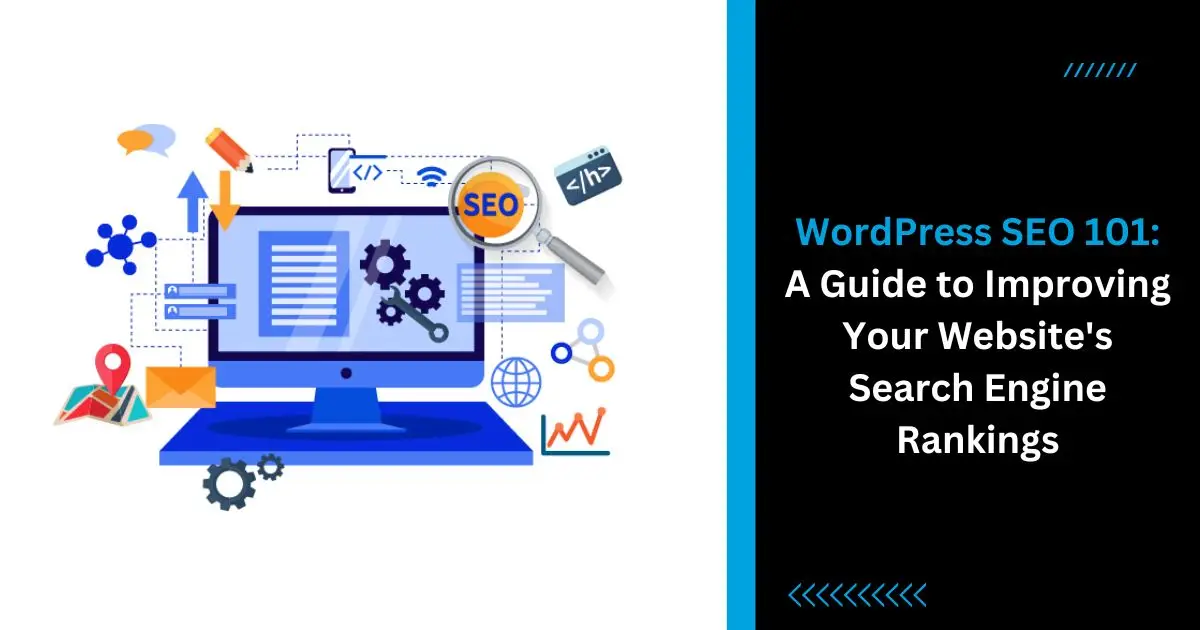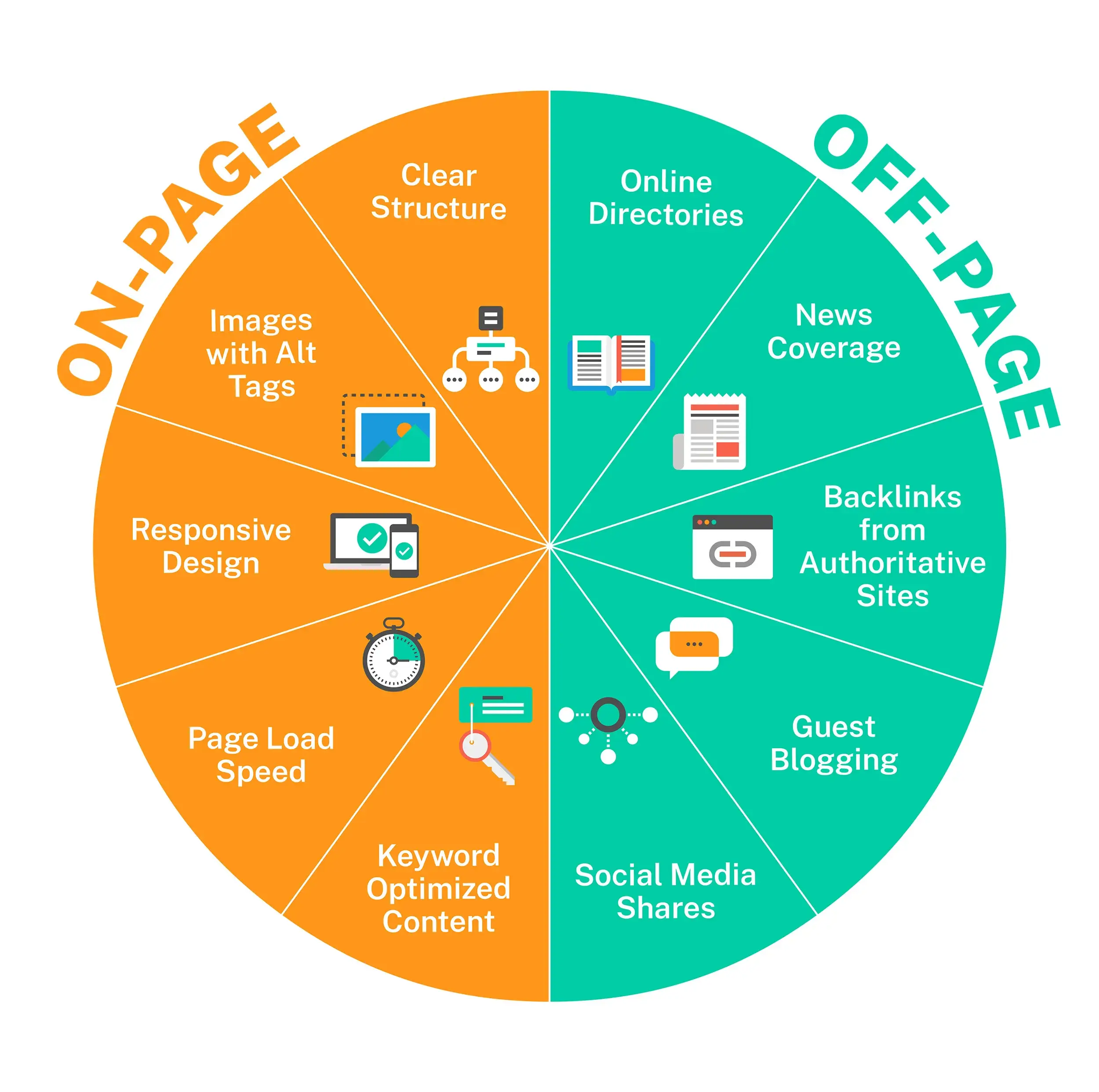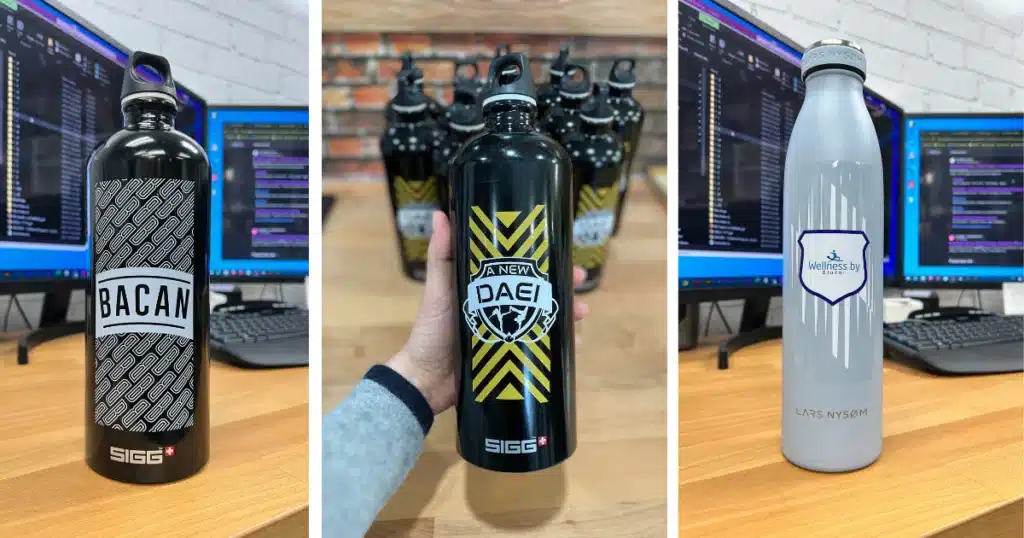Search Engine Optimization (SEO) is the process of optimizing a website or a webpage to rank higher in the search engine results page (SERP) for specific keywords or phrases. SEO involves making changes to the website’s structure and content to make it more relevant and attractive to search engines, and ultimately to the users who are searching for information.
WordPress is one of the most popular content management systems (CMS) used to create websites, but without SEO optimization, it may not rank well in search engines. Good SEO practices can help improve the visibility of a WordPress website and attract more organic traffic. This can lead to increased brand awareness, higher conversion rates, and more revenue.
The purpose of this blog post is to provide a comprehensive guide on how to optimize a WordPress website for SEO. It will cover everything from setting up WordPress for SEO to on-page optimization, off-page optimization, local SEO, and technical SEO. By following the tips and best practices outlined in this blog, WordPress website owners can improve their website’s visibility and rank higher in search engines, ultimately leading to more traffic and better business outcomes.
Setting Up WordPress for SEO
-
Choosing a suitable WordPress theme:
Choosing a suitable WordPress theme is an important step in setting up a WordPress website for SEO. A theme should be fast, mobile-friendly, and have clean and well-structured code. It’s also important to choose a theme that is regularly updated and has good support to ensure that it stays compatible with the latest WordPress version and SEO best practices.
-
Installing essential SEO plugins:
Installing essential SEO plugins is crucial in optimizing a WordPress website for search engines. There are a number of plugins available that can help with various aspects of SEO, such as Yoast SEO, All in One SEO Pack, and Rank Math. These plugins can help with tasks such as creating and optimizing meta titles and descriptions, generating XML sitemaps, and implementing schema markup.
-
Configuring permalink structure:
The permalink structure is the way URLs are formatted on a WordPress website. A good permalink structure is important for both users and search engines as it helps them understand what the page is about. WordPress offers several options for the permalink structure, and it’s important to choose a structure that is user-friendly and includes relevant keywords.
-
Optimizing site speed:
Site speed is an important ranking factor for search engines and can also impact user experience. WordPress website owners can optimize site speed by using a caching plugin, optimizing images, using a content delivery network (CDN), and choosing a fast web hosting provider. Faster sites lead to better user engagement, lower bounce rates, and ultimately better SEO results.
Keyword Research
Keyword research is the process of identifying and analyzing the search terms that users enter into search engines when looking for information. The goal of keyword research is to understand what topics and phrases are popular and relevant to the website’s niche or industry. This information is then used to optimize website content and structure to rank higher in search engine results pages.
-
Types of keywords:
There are different types of keywords that can be used for SEO, including:
- Short-tail keywords: Generic and highly competitive keywords that are typically one or two words in length.
- Long-tail keywords: More specific and less competitive keywords that are typically three or more words in length.
- Branded keywords: Keywords that include the name of the brand or company.
- LSI keywords: Keywords that are semantically related to the main keyword.
-
Tools for keyword research:
There are various tools available to help with keyword research, such as Google Keyword Planner, Ahrefs, SEMrush, and Moz. These tools provide data on keyword search volume, competition, and related keywords, which can help website owners identify high-potential keywords for optimization.
-
Importance of long-tail keywords:
Long-tail keywords are important in SEO as they are more specific and less competitive, making it easier for websites to rank for them. Long-tail keywords also tend to have higher conversion rates as they are more likely to be used by users who are ready to make a purchase or take a specific action.
-
Keyword placement and density:
Keyword placement refers to the location of the keyword within the content, such as in the title tag, meta description, headers, and body of the text. It’s important to use keywords in a natural and relevant way, and not to overuse them as this can be seen as spammy and lead to penalties. Keyword density refers to the number of times a keyword appears in a piece of content, and ideally, it should be between 1-3% of the total word count.
Keyword Research Tips
- Start with a broad list of potential keywords: Begin by brainstorming a list of broad keywords that are relevant to your business or topic. This will help you generate ideas for more specific keywords later on.
- Use keyword research tools: There are several keyword research tools available, such as Google Keyword Planner, SEMrush, Ahrefs, and Moz Keyword Explorer. These tools can help you identify relevant keywords, estimate search volumes, and analyze the competition.
- Consider the search intent: When choosing keywords, consider the search intent of your target audience. Are they looking for information, products, or services? Understanding search intent can help you choose keywords that are more likely to attract the right type of visitors.
- Analyze your competition: Analyze the keywords your competitors are targeting and consider incorporating similar keywords into your own strategy.
- Look for long-tail keywords: Long-tail keywords are more specific and less competitive than broad keywords, making them easier to rank for. Look for long-tail keywords that are relevant to your business or topic.
- Analyze the search volume and competition: Choose keywords that have a good balance of search volume and competition. Keywords with high search volume and low competition are ideal.
- Use location-based keywords: If you have a local business, consider using location-based keywords that include the name of your city or region.
- Use variations of your keywords: Use variations of your keywords, such as plurals or synonyms, to increase your chances of ranking for related searches.
- Use negative keywords: Identify negative keywords, which are keywords that you do not want to rank for, and exclude them from your strategy. This will help you avoid irrelevant traffic and improve the quality of your visitors.
- Review and adjust your strategy regularly: Keyword research is an ongoing process, so it’s important to regularly review and adjust your strategy based on changes in search behavior, competition, and other factors.
On-Page SEO Optimization
On-page optimization refers to the process of optimizing individual web pages to rank higher and earn more relevant traffic in search engines. It involves optimizing various elements on the page, such as the content, images, HTML tags, and internal links.
-
Title tags and meta descriptions:
Title tags and meta descriptions are HTML tags that provide information to search engines about the content of the page. The title tag appears as the clickable headline in search engine results, while the meta description provides a brief summary of the page’s content. It’s important to use relevant keywords in both the title tag and meta description to help search engines and users understand what the page is about.
-
Header tags:
Header tags, such as H1, H2, and H3, are HTML tags that are used to structure the content on a web page. Header tags help search engines and users understand the hierarchy and organization of the content on the page. It’s important to use relevant keywords in header tags and to use them in a natural and meaningful way.
-
Internal linking:
Internal linking refers to linking to other pages on the same website. Internal linking helps search engines and users understand the structure of the website and the relationships between different pages. It’s important to use relevant anchor text when linking to other pages and to ensure that the links are natural and relevant.
-
Image optimization:
Image optimization involves optimizing images on a web page to make them more search engine friendly. This includes compressing images to reduce file size, using descriptive file names and alt tags, and optimizing the image size and dimensions.
-
Content optimization:
Content optimization involves optimizing the actual content on the web page. This includes using relevant keywords in the body of the text, ensuring that the content is well-written and engaging, and providing value to the user. It’s important to avoid keyword stuffing and to focus on creating high-quality, useful content that meets the needs of the user.
On-Page SEO Stats
- According to a study by Backlinko, the average Google first page result contains 1,890 words.
- A study by SEMrush found that 75% of websites have duplicate content issues, which can negatively impact SEO.
- HubSpot reports that companies that blog receive 97% more links to their website than those that don’t.
- According to a study by Moz, using a keyword in the page title is the most important on-page SEO factor.
- Another study by Moz found that URLs containing a keyword rank higher than those that do not.
- According to a study by Yoast, using at least one image on a page can improve its SEO, as Google considers visual content as a ranking factor.
- A study by SEMrush found that pages with a higher word count tend to rank better in search results.
- According to a study by Searchmetrics, using internal links can improve the visibility of a website in search engine results in pages.
- A study by Moz found that content with at least one H1 tag tends to rank higher in search results than those without.
- HubSpot reports that incorporating video content into a webpage can improve its SEO, as Google considers video as a ranking factor.
On-Page SEO Tips
- Optimize page titles and meta descriptions: Use relevant keywords in the page title and meta description to improve the page’s visibility in search engine results pages (SERPs).
- Use header tags: Use header tags (H1, H2, H3, etc.) to break up content and help search engines understand the structure of the page.
- Use descriptive URLs: Use descriptive and keyword-rich URLs that clearly communicate the page’s topic to search engines and users.
- Optimize content: Use relevant keywords throughout the content, but don’t overdo it. Aim for a natural and engaging writing style that incorporates relevant keywords.
- Add internal links: Add internal links to relevant pages within the website to help users navigate and search engines understand the website structure.
- Optimize images: Use relevant keywords in image filenames, alt tags, and captions to help search engines understand the context of the image.
- Use schema markup: Use schema markup to provide additional context and information about the content on the page to search engines.
- Improve page speed: Optimize page speed by compressing images, minifying code, and using caching to improve the user experience and search engine ranking.
- Use social sharing buttons: Include social sharing buttons on the page to encourage users to share the content on social media, which can improve visibility and traffic.
- Use mobile optimization: Optimize the page for mobile devices, including using responsive design, to improve the user experience and search engine ranking on mobile devices.
Off-Page SEO Optimization
Off-page optimization refers to the actions taken outside of the website to improve its ranking and visibility in search engines. It includes various techniques such as link building, social media optimization, and online reputation management.
-
Backlinks and their importance:
Backlinks are links from other websites to your website. They are an important factor in off-page optimization as they signal to search engines that your website is authoritative and relevant. The quality and quantity of backlinks are important, with high-quality links from authoritative websites being more valuable.
-
Building backlinks through guest blogging and outreach:
Guest blogging involves writing content for other websites and including a link back to your own website in the author bio or within the content. Outreach involves reaching out to other websites and asking them to link to your website. Both techniques require creating high-quality content that provides value to the user and building relationships with other website owners in your niche or industry.
-
Social media optimization:
Social media optimization involves optimizing social media profiles and content to increase visibility and drive traffic to the website. This includes creating shareable content, engaging with followers and influencers, and using relevant hashtags and keywords. Social signals, such as likes, shares, and comments, can also indirectly impact search engine rankings.
Off-Page SEO Stats
- According to a study by Moz, the number of domains linking to a page is one of the strongest factors in determining search engine ranking.
- A study by Backlinko found that the average first-page result on Google contains 66 external linking domains.
- According to a study by Search Engine Journal, high-quality backlinks from authoritative websites can increase organic traffic by up to 600%.
- A study by Ahrefs found that the majority of web pages have no backlinks, with only 5.7% of pages having at least one backlink.
- According to Google, social media signals (such as likes, shares, and comments) are not directly considered a ranking factor, but they can indirectly influence rankings through increased visibility and traffic.
- A study by SEMrush found that high-quality, long-form content tends to attract more backlinks than shorter content.
- According to Google, links from irrelevant or low-quality websites can negatively impact search engine rankings.
- A study by Moz found that anchor text (the text used in a hyperlink) is an important factor in determining the relevance of a backlink to the linked page.
- A study by Backlinko found that websites with a higher domain rating (a metric that estimates a website’s overall backlink profile) tend to rank higher in search engine results pages.
- According to a study by Searchmetrics, brand signals (such as mentions, brand searches, and social media followers) can indirectly influence search engine rankings.
Off-Page SEO Tips
- Build high-quality backlinks: Focus on acquiring backlinks from authoritative websites that are relevant to your niche.
- Use anchor text effectively: Use relevant and descriptive anchor text in your backlinks to help search engines understand the context of the link.
- Create shareable content: Create content that is interesting, informative, and shareable to increase the likelihood of attracting backlinks and social media shares.
- Leverage social media: Use social media platforms to share content, build relationships, and attract backlinks and social signals.
- Guest blogging: Guest blogging on relevant and authoritative websites can help to build backlinks and increase exposure.
- Participate in online communities: Participate in online communities relevant to your niche to build relationships, establish your expertise, and attract backlinks.
- Monitor your brand mentions: Monitor online mentions of your brand and respond to them appropriately, including asking for backlinks where appropriate.
- Build relationships with influencers: Build relationships with influencers in your niche to increase the likelihood of receiving backlinks and social media mentions.
- Utilize local SEO: Optimize your website for local search by creating a Google My Business listing, building local citations, and creating local content.
- Monitor your backlink profile: Regularly monitor your backlink profile to identify and disavow any low-quality or spammy backlinks that could negatively impact your search engine rankings.
Local SEO Optimization
Local SEO is the process of optimizing a website for location-based searches. It focuses on improving the visibility of a business in local search results by optimizing various on-page and off-page factors. Local SEO is particularly important for businesses that have a physical presence or serve customers in a specific geographic location.
-
Creating a Google My Business listing:
Google My Business (GMB) is a free tool that allows businesses to manage their online presence across Google, including search results and maps. By creating a GMB listing, businesses can provide accurate and up-to-date information about their business, such as their address, phone number, website, hours of operation, and customer reviews. Optimizing your GMB listing can improve your local search rankings and increase visibility in the local pack, which appears at the top of Google’s search results for local queries.
-
Citation building:
Citation building involves listing your business information, such as name, address, and phone number, on other websites and directories. These citations help to verify and validate your business information and can improve your local search rankings. It’s important to ensure that your business information is consistent across all citations and that you only list your business on reputable and relevant websites.
-
Local content creation:
Local content creation involves creating content that is relevant and useful to your local audience. This can include creating blog posts, videos, or social media content that highlights local events, news, or landmarks. By creating local content, businesses can engage with their local audience, increase their visibility in local search results, and build relationships with other businesses and organizations in the community.
Local SEO Stats
- According to Google, 46% of all searches have local intent.
- A study by Moz found that Google My Business (GMB) signals (such as proximity, categories, and keywords in business titles) are the most important ranking factor for local organic results.
- According to Google, 76% of people who search for something nearby on their smartphone visit a related business within a day, and 28% of those searches result in a purchase.
- A study by BrightLocal found that 87% of consumers read online reviews for local businesses.
- According to a survey by ReviewTrackers, 63% of consumers are likely to check online reviews on Google before visiting a business.
- A study by Moz found that citation signals (such as the consistency and accuracy of business information across online directories) are the second most important ranking factor for local organic results.
- According to a study by Search Engine Land, 50% of consumers who conduct a local search on their smartphone visit a store within a day, and 18% of those searches result in a purchase.
- A study by Google found that businesses with complete and accurate information on their GMB listing are twice as likely to be considered reputable by consumers.
- According to a study by BrightLocal, 97% of consumers search for local businesses online, and 12% search for a local business online every day.
- A study by HubSpot found that 72% of consumers who perform a local search visit a store within five miles of their current location.
Local SEO Tips
- Create and optimize your Google My Business (GMB) listing: Ensure your GMB listing is accurate and complete, and includes relevant keywords, business hours, contact information, and photos.
- Claim and optimize your business listings on other online directories and review sites: Ensure your business information is consistent across all listings, and encourage customer reviews.
- Use location-based keywords in your website content: Optimize your website content to include keywords relevant to your location, such as city names or landmarks.
- Create location-specific content: Create content that is specific to your local area, such as blog posts about local events or news.
- Build local links: Build backlinks from local websites, such as local news outlets or community organizations.
- Use schema markup: Use schema markup to help search engines understand the context of your business and its location.
- Get listed in local directories: Get listed in local directories, such as Chamber of Commerce websites or local business associations.
- Optimize your website for mobile: Ensure your website is mobile-friendly and loads quickly, as mobile searches are increasingly important for local search.
- Engage with your customers: Respond to customer reviews and engage with customers on social media to build relationships and improve your online reputation.
- Monitor your local search rankings and analytics: Use tools such as Google Analytics to monitor your local search rankings and website traffic, and adjust your strategy accordingly.
Technical SEO Optimization
Technical SEO refers to the process of optimizing the technical aspects of a website to improve its visibility and ranking in search engine results pages. It focuses on improving the website’s structure, performance, and security to provide a better user experience and make it easier for search engines to crawl and index the website’s pages.
-
Importance of site structure:
A well-organized site structure can help search engines understand the hierarchy and relationships between different pages on your website. This can improve your website’s crawlability and indexing, and help to ensure that your most important pages are given priority in search results. Some key elements of site structure include using clear and descriptive URLs, organizing content into categories and subcategories, and using internal linking to connect related pages.
-
Site speed optimization:
Site speed is an important factor in both user experience and search engine optimization. A slow-loading website can lead to high bounce rates and decreased user engagement, which can negatively impact search rankings. To improve site speed, it’s important to optimize images and videos, minify and compress files, and reduce server response time.
-
Mobile optimization:
With more users accessing websites on mobile devices, mobile optimization has become an important aspect of technical SEO. Google now uses mobile-first indexing, which means that the mobile version of a website is given priority in search results. To optimize for mobile, it’s important to use responsive design, which ensures that the website adapts to different screen sizes and devices, and to optimize content for mobile viewing.
-
HTTPS and security:
Using HTTPS (Hyper Text Transfer Protocol Secure) can improve your website’s security and search engine rankings. HTTPS encrypts data that is transmitted between the user’s browser and the website’s server, which helps to protect sensitive information and prevent attacks such as data theft and hacking. Google has also stated that HTTPS is a ranking signal, which means that websites that use HTTPS are given a slight boost in search results.
Technical SEO Stats
- According to a study by Backlinko, websites with fast-loading pages have a higher average position in Google search results.
- A study by SEMrush found that HTTPS is a ranking factor for Google, with HTTPS websites appearing higher in search results.
- A study by Google found that 53% of mobile users abandon a site if it takes longer than three seconds to load.
- According to a study by Backlinko, the average time it takes to fully load a mobile landing page is 22 seconds, but 53% of mobile users will abandon a page if it takes longer than three seconds to load.
- A study by Google found that 61% of users are unlikely to return to a mobile site they had trouble accessing, and 40% will visit a competitor’s site instead.
- According to a study by Moz, duplicate content can negatively impact search engine rankings.
- A study by HubSpot found that bounce rate (the percentage of visitors who leave your website after viewing only one page) is a key factor in Google’s ranking algorithm.
- A study by Google found that 46% of mobile users say they are unlikely to revisit a website that had a poor mobile experience.
- According to a study by SEMrush, websites with a higher number of referring domains tend to rank higher in search results.
- A study by Moz found that broken links and 404 errors can negatively impact search engine rankings.
Technical SEO Tips
- Ensure your website is mobile-friendly: With the increasing use of mobile devices for browsing, it’s important to ensure your website is optimized for mobile screens.
- Improve site speed: A slow-loading website can negatively impact user experience and search engine rankings, so it’s important to optimize your site speed.
- Use HTTPS: Using HTTPS instead of HTTP helps to ensure the security of your website and can also improve search engine rankings.
- Optimize your robots.txt file: Your robots.txt file tells search engines which pages they should and should not crawl, so it’s important to optimize it for the best results.
- Fix broken links: Broken links can negatively impact user experience and search engine rankings, so it’s important to fix them as soon as possible.
- Optimize your XML sitemap: Your XML sitemap helps search engines understand the structure of your website, so it’s important to ensure it’s optimized and up-to-date.
- Use structured data: Structured data helps search engines better understand the content of your website, which can lead to improved rankings and click-through rates.
- Optimize your site architecture: A well-organized site architecture can help search engines better understand the content of your website and improve user experience.
- Use canonical tags: Canonical tags help to avoid duplicate content issues and ensure that search engines correctly index your pages.
- Ensure your website is crawlable: Ensure that search engines can crawl your website and that there are no technical issues preventing them from doing so. This can be achieved through regular site audits and monitoring.
FAQs about SEO
What is SEO?
SEO stands for search engine optimization, which is the process of optimizing your website to rank higher in search engine results pages (SERPs). This is done by making changes to your website’s content, structure, and other factors to improve its relevance, authority, and user experience.
Why is SEO important?
SEO is important because it can help you attract more targeted traffic to your website, improve your online visibility and credibility, and ultimately drive more conversions and revenue. By ranking higher in search engine results pages, you can increase your website’s exposure to potential customers who are actively searching for your products or services.
What are the different types of SEO?
There are several types of SEO, including on-page optimization, off-page optimization, local SEO, and technical SEO. Each type focuses on different aspects of optimizing your website for search engines and improving your online presence.
How long does it take to see results from SEO?
The time it takes to see results from SEO can vary depending on several factors, including the competitiveness of your industry, the quality of your website’s content and structure, and the effectiveness of your SEO strategy. Generally, it can take several weeks or months to see significant improvements in your search engine rankings and traffic.
What are keywords?
Keywords are the terms and phrases that people use to search for information, products, or services online. They are an important part of SEO because they help search engines understand the content and context of your website’s pages and help you target specific audiences.
What is link building?
Link building is the process of acquiring links from other websites back to your own website. This is an important part of off-page SEO because it can help to increase your website’s authority, relevance, and visibility in search engine results pages.
How do I measure the success of my SEO efforts?
There are several ways to measure the success of your SEO efforts, including tracking your website’s search engine rankings, traffic, and conversions. You can use tools like Google Analytics and Google Search Console to monitor your website’s performance and make adjustments to your SEO strategy as needed.
Can I do SEO myself, or do I need to hire an agency?
While it is possible to do SEO yourself, it can be a complex and time-consuming process that requires specialized knowledge and skills. Hiring an SEO agency can be a good option if you don’t have the time or expertise to do it yourself, or if you want to ensure that your SEO strategy is effective and up-to-date with the latest best practices.
In conclusion, SEO is a crucial aspect of online marketing and can greatly impact the success of your website. By implementing the best practices outlined in this blog post, you can improve your website’s search engine rankings and attract more traffic to your site.
To recap, we covered the basics of SEO, including on-page optimization, off-page optimization, local SEO, and technical SEO. We discussed tips for keyword research, optimizing site speed, building backlinks, and creating a Google My Business listing.
We also provided various statistics and tips to help you better understand each aspect of SEO and how you can apply it to your website.
We encourage you to take action and implement these best practices to improve your website’s visibility and overall performance in search engine results. By doing so, you can attract more targeted traffic, increase conversions, and ultimately grow your business online.
In closing, remember that SEO is an ongoing process that requires consistent effort and attention. Keep learning, stay up-to-date with the latest trends and updates, and continue to optimize your website to achieve long-term success.
Ready to Talk?
Looking to boost your business’s online presence and drive more traffic to your website? Branding Centres can help! As an all-in-one marketing agency in Toronto, we offer a range of services including SEO, web design, vehicle wrap, and printing services to help your business stand out. Contact us today to learn more and take your marketing efforts to the next level!






